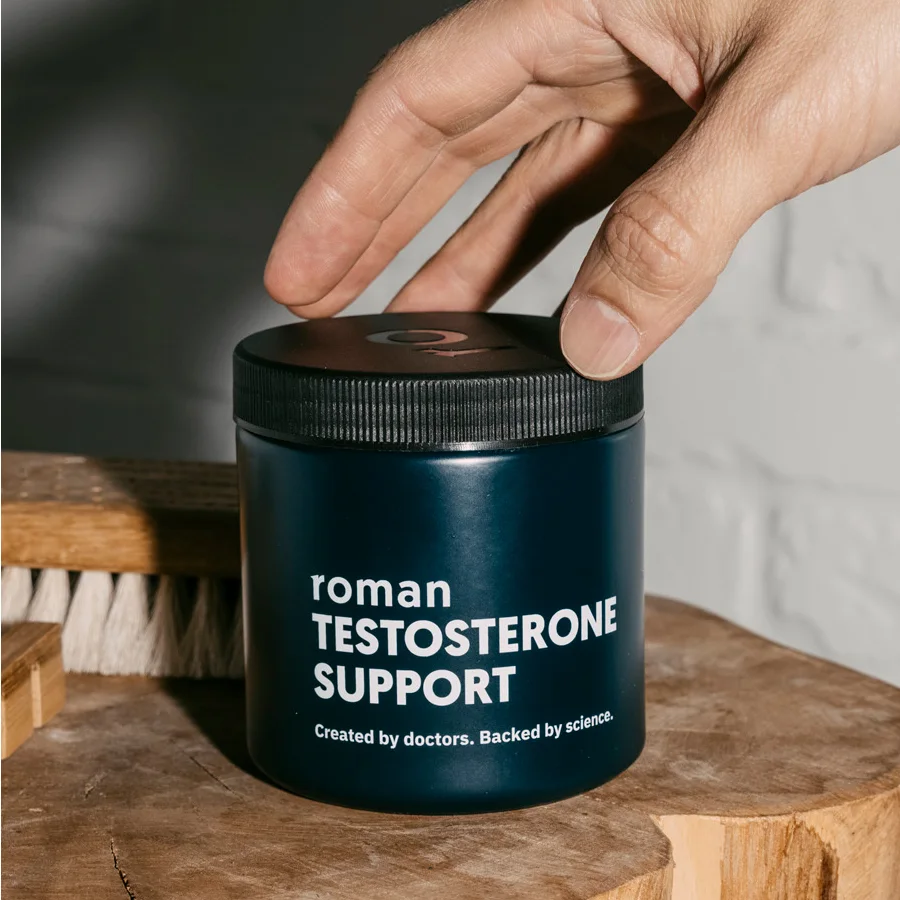Here's what we'll cover
Here's what we'll cover
Here's what we'll cover
Many people experience low testosterone (or low T), and testosterone levels naturally decrease as we age. Low T can cause myriad less-than-desirable symptoms, including fatigue, low sex drive, muscle loss, and depression. So It’s no wonder those experiencing low T are eager to find a solution. Testosterone replacement therapy (TRT) is one option to increase testosterone levels and treat the symptoms of low testosterone. But TRT is not without potential side effects. Some TRT side effects include acne, breast growth, and low sperm production. Continue reading to learn more about TRT side effects (and TRT myths).
Mild side effects of TRT
Like any medication, those receiving testosterone replacement therapy may experience some mild symptoms. Here are some of the mild symptoms experienced by people receiving TRT (Osterberg, 2014):
Acne
When testosterone levels rise, so does the production of sebum (an oily substance found on the skin). More sebum can sometimes lead to the development or worsening of acne.
Breast growth and/or tenderness
10–25% of men receiving TRT experience gynecomastia (an increase in breast tissue) and/or breast pain. That’s because TRT can cause an imbalance in the interaction between the hypothalamus, pituitary gland, and adrenal glands. This imbalance may cause some testosterone to be converted to estrogen through a process called aromatization.
Water retention
Water retention, or edema, is a known side effect of TRT. While this side effect is generally mild in people receiving TRT, water retention may cause swelling in the hands, legs, ankles, and feet.
Hair pattern changes
Although no randomized placebo trials exist, some people receiving TRT have reported changes to their hair patterns. More research is needed to understand this potential side effect.
While side effects like acne and hair pattern changes are undoubtedly disruptive, these side effects are generally considered tolerable and low risk. Continue reading to learn more about testosterone replacement therapy's potentially severe risks (and myths).
Testosterone and prostate cancer
While TRT does not cause prostate cancer, it has been shown to accelerate the growth of prostate cancer when the cancer is already present. Let’s break that down.
Androgen deprivation therapy, or ADT, reduces the amount of testosterone produced in the testes. Because ADT is a staple in treating prostate cancer, it’s no surprise that people diagnosed with prostate cancer and those at high risk for prostate cancer should not receive testosterone therapy. Unfortunately, studies show that men with metastatic prostate cancer who were given testosterone had worse outcomes (Osterberg, 2014).
However, many studies investigating testosterone levels and subsequent prostate cancer risk (in men who did not already have prostate cancer) did not find any connection. These studies revealed that prostate cancer incidence is similar whether men are on TRT or not. In another meta-analysis of 18 studies involving over 3,500 men, there was no association between testosterone levels and the risk of prostate cancer development (Osterberg, 2014).
If you’re considering TRT, tell your healthcare provider about any family history of prostate or breast cancer.
Testosterone and heart disease
Perhaps one of the most common fears surrounding TRT is the potential impact on heart health. In fact, the FDA requires testosterone labels to warn consumers about possible cardiovascular risks. However, research on the connection between testosterone and heart health paints a different picture.
Four scientific articles have identified a possible connection between cardiovascular risk and TRT. However, two of those studies contained significant methodological limitations, and another meta-analysis included questionable studies. The most comprehensive meta-analysis found no increase in cardiovascular risks among men receiving TRT, and reduced cardiovascular risks among men with metabolic disease receiving TRT. Testosterone replacement therapy was even found to reduce obesity, waist circumference, and fat mass (all risk factors for heart disease) (Morgentaler, 2015).
If you have heart problems, experts still recommend exercising caution when receiving TRT.
Testosterone and sperm count
Testosterone production is a feedback loop. When your brain senses low testosterone levels in your blood, it releases two chemicals: luteinizing hormone (LH) and follicle-stimulating hormone (FSH). LH stimulates the production of testosterone in the testicles. FSH is essential for sperm production.
Adding external testosterone into the body causes the brain to slow the release of both LH and FSH (because it thinks you don’t need them anymore). FSH is responsible for sperm production in the testicles, so decreased FSH may mean decreased sperm count, which can negatively impact fertility.
If you experience symptoms of low T, you’re not alone. Speak with your healthcare provider to find a safe treatment plan that’s right for you.
DISCLAIMER
If you have any medical questions or concerns, please talk to your healthcare provider. The articles on Health Guide are underpinned by peer-reviewed research and information drawn from medical societies and governmental agencies. However, they are not a substitute for professional medical advice, diagnosis, or treatment.
References
Grech, A., Breck, J., & Heidelbaugh, J. (2014). Adverse effects of testosterone replacement therapy: an update on the evidence and controversy. Therapeutic Advances in Drug Safety, 5 (5), 190–200. doi:10.1177/2042098614548680. Retrieved from https://www.ncbi.nlm.nih.gov/pmc/articles/PMC4212439/
Morgentaler, A., Miner, M. M., Caliber, M., et al. (2015). Testosterone therapy and cardiovascular risk: Advances and controversies. Mayo Clinic Proceedings , 90 (2), 224–251. doi:10.1016/j.mayocp.2014.10.011. Retrieved from https://www.mayoclinicproceedings.org/article/S0025-6196(14)00925-2/fulltext
Osterberg, E. C., Bernie, A. M., & Ramasamy, R. (2014). Risks of testosterone replacement therapy in men. Indian journal of urology : IJU: Journal of the Urological Society of India, 30 (1), 2–7. doi:10.4103/0970-1591.124197. Retrieved from https://pubmed.ncbi.nlm.nih.gov/24497673/










